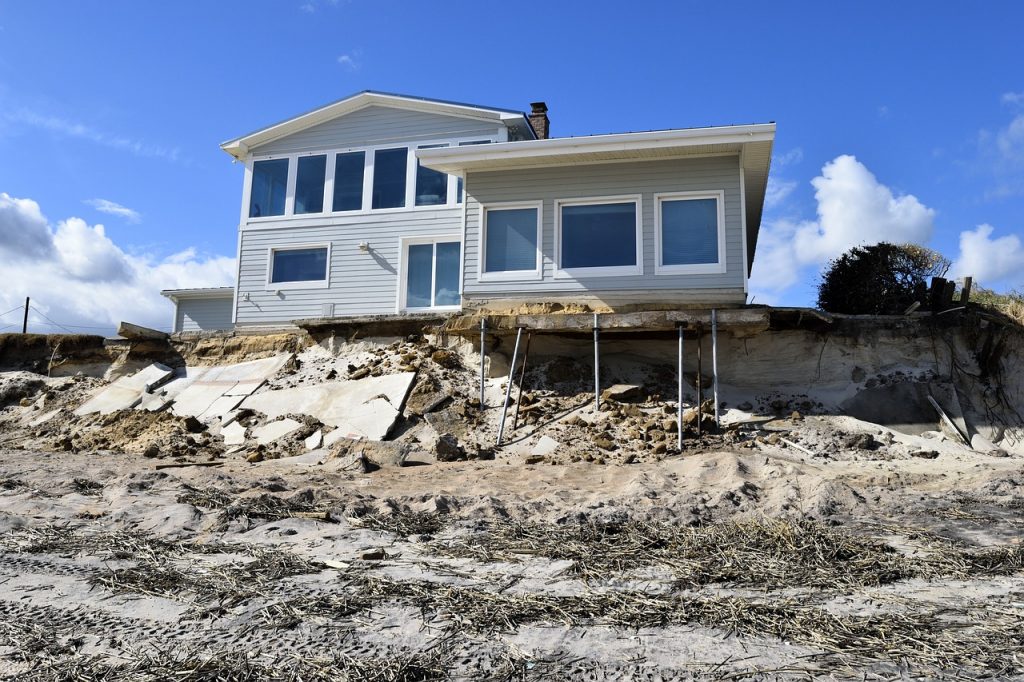The likelihood of subsidence, heave or landslip is veritably among a property owner’s worst fears. Gradual, or even sudden, downward movement of the building sinking (or “subsiding”) into the ground, a phenomenon that is not related to the weight of the structure, can have a bearing on the site, much beyond the groundwork.

Settlement is normally seen to occur in new or comparatively new buildings. Their weight could cause the ground to contract, but this often stops after a short span of time. Subsidence, on the other hand, is typically marked by a decline in buttress from the building’s foundations and can happen over a period of time without the occupants noticing it until they observe a crack somewhere.
Among the main causes of subsidence are fall in the underground water level, shrinkage of soil, draining of organic soils for agriculture or other purposes, underground mining, and thawing of ground that remains frozen for long, called permafrost, besides loss of subsurface soil in the aftermath of heavy rains, and collapse of abandoned mines.
There are many tell-tale signs associated with subsidence. These include developing of large cracks in the walls, ceilings, and the brickwork outside, expansion of the cracks already existing in the structure, surfacing of cracks after a prolonged spell of dry weather, sticking of doors and windows, and sloping floors.
In case you spot signs of subsidence in your house, it is vital to seek expert advice and be in touch with your insurer. At times, it may even take months to identify cracks as signs of subsidence. An expert will come up with appropriate advice and suggestions for the course of action. The suggestions may include underpinning, (a term used for the process of stabilising the foundations), removing trees or vegetation, or even demolishing and rebuilding. The repair work can be long-drawn and costly, requiring you to shell out an amount ranging from £5,000 to £50,000, incumbent on the property size and the scope of the harm.
Is your property suffering from subsidence? Despair not, because in many such cases, the problem can, in fact, be reversed with the help of refined technology at our disposal. Particular trees that might be causing the subsidence can be identified.
A property survey is a threadbare analysis of the condition of a structure. The surveyor has a close look at the property and lets you know whether there are problems such as unstable walls or subsidence. They will come up with details such as the need for repairs or modifications required.
If you are planning to sell your home after it has suffered subsidence, you may think in terms of concealing info that could be a put-off for prospective buyers. However, being forthright about it is, in more ways than one, in your best interest. Sellers are supposed to fill in a form relating to the property, with details of works undertaken in the building. There are also questions about home insurance. Failure to come up with information that is accurate, and inconsistencies being found out at a later date could mean claim for misrepresentation.
Lots of household insurance policies, and some commercial property insurance policies, cover loss or damage caused by subsidence, heave and landslip. The cost of rectification of the structure is, thus, covered in such cases.
Most household insurance policies - and in fact, some of the commercial property insurance policies - cover loss or damage caused by subsidence, heave and landslip. They do not cover the cost of offsetting further subsidence.
Keep your eyes peeled for the extent of cover being offered by a home insurance policy. Just don’t make any assumptions as to whether something is covered or not. Do check the fine print, omissions and exceptions connected to subsidence. There might be clauses relating to the types of buildings or structures covered. Subsidence can impact premiums and excesses for years together and is supposed to be declared upon insurance. There are insurers who will refuse to cover a client whose property has encountered landslip, heave or subsidence as they consider it all a risky proposition.